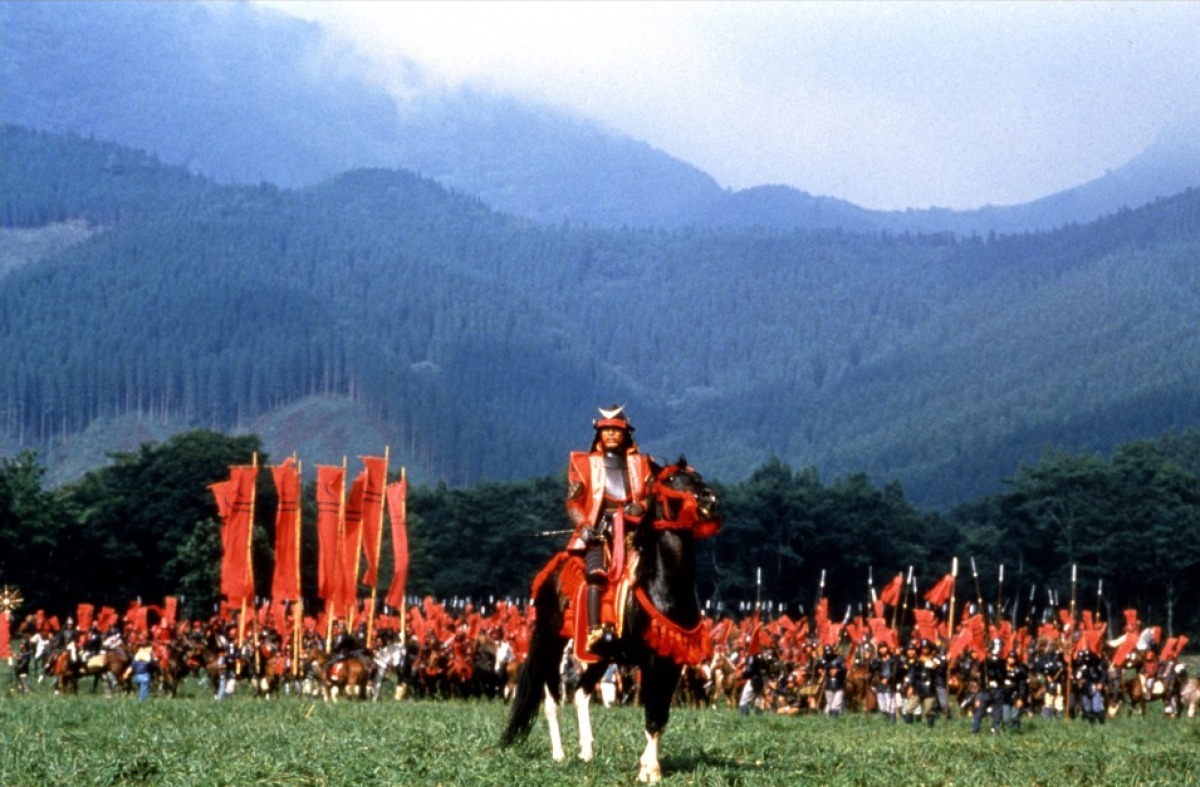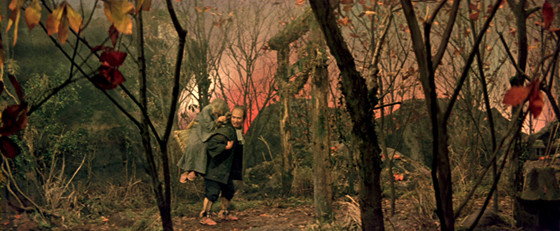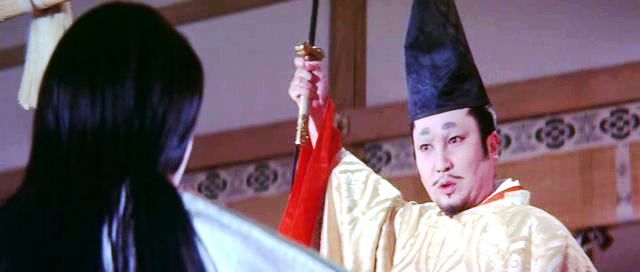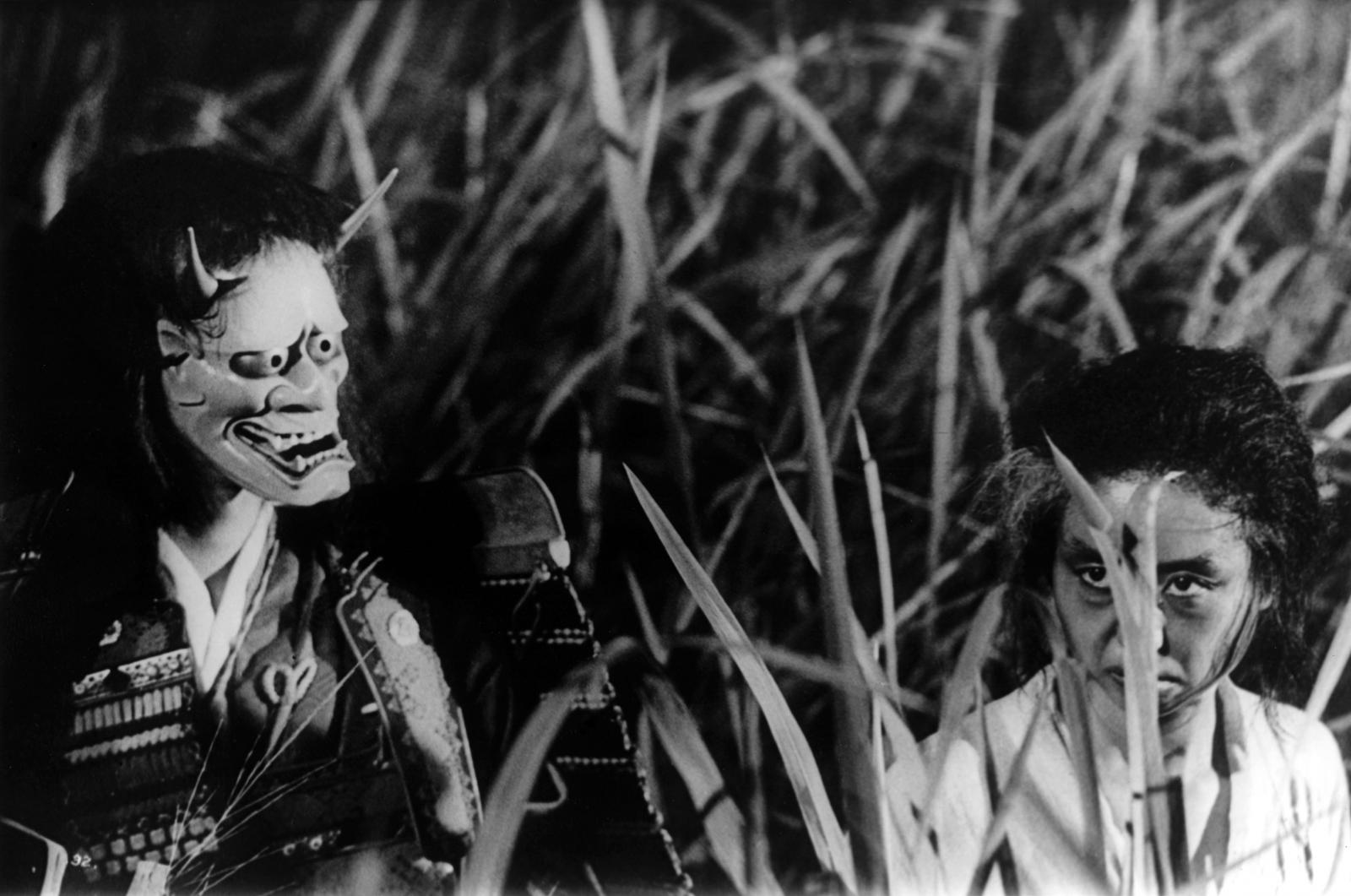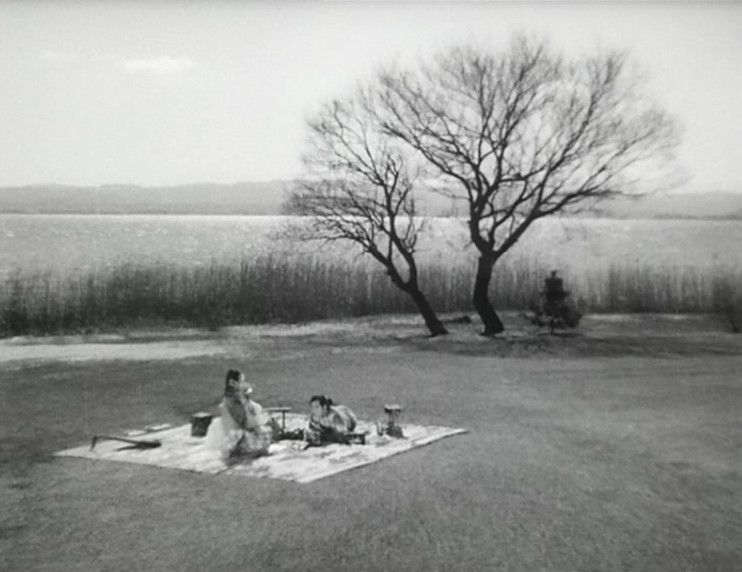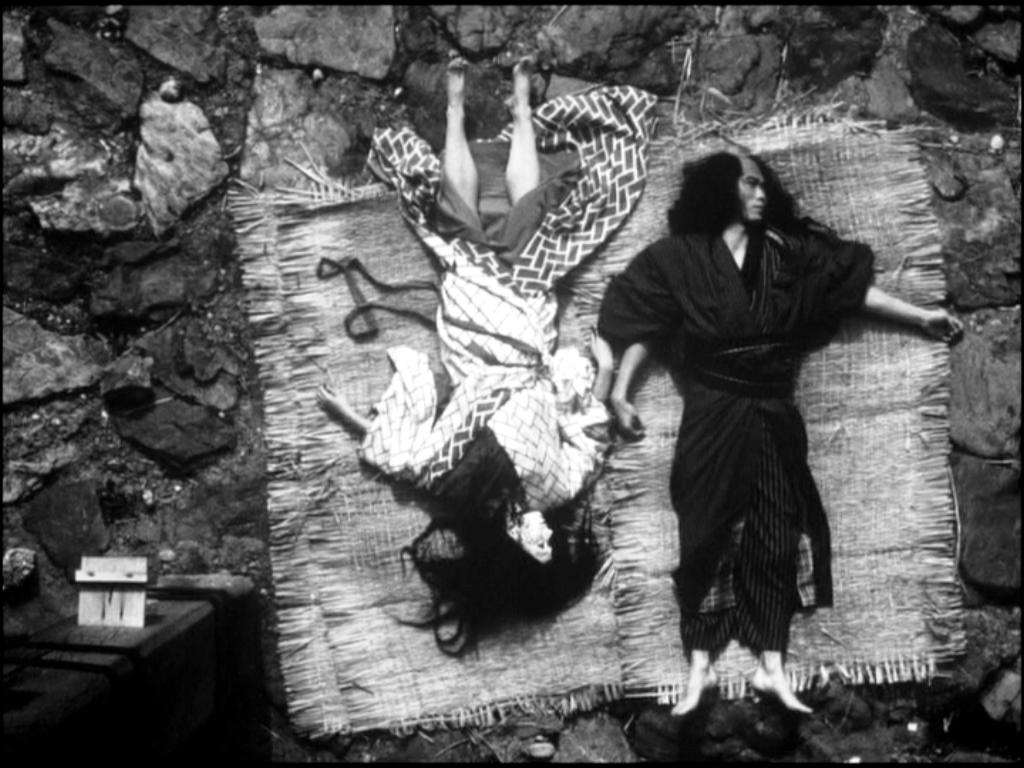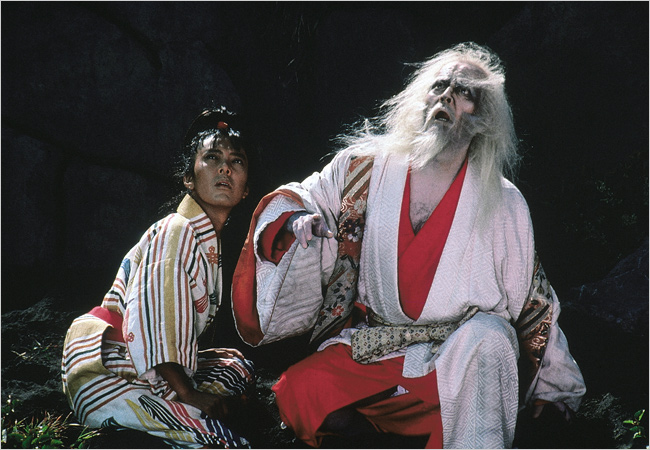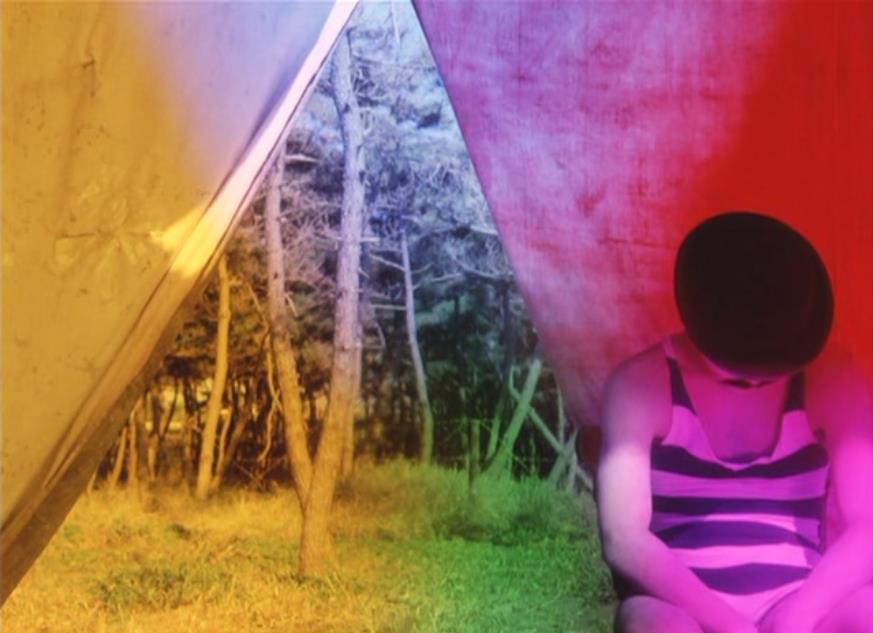Jidaigeki is the incomparable genre of world film history that Japan has given the world. Samurai, geisha, Shogun, sword fights, zen culture, craftsmen and more are common themes in Jidaigeki films. Samurai film is the subgenre of Jidaigeki, which is why the two genres can’t be separated. However, there are so many great samurai films that one needs to make a separate list for those.
Here, movies regarding primarily samurai and sword fights are excluded. For example, Akira Kurosawa’s samurai films like “Seven Samurai”, “Yojimbo”, and “Sanjuro”, and Masaki Kobayashi’s “Samurai Rebellion” and “Harakiri” aren’t included, where the sword fights of ronin and samurai are the main story. However, their other Jidaigeki films are included, which don’t have too much of a samurai and ronin element.
The main aim of this list isn’t to devaluate those great samurai films but to throw light on many great but shadowed, underrated and underpraised Jidaigeki films.
Jidaigeki films are stunningly beautiful, mainly because of the Japanese culture of the Edo period: chivalrous samurai, devoted wives, shogun, outcast ronins, immensely beautiful geishas, traditional customs and houses, sword fights, and zen culture are the main attractions. The themes of revenge, love, hate, devotion, infidelity, lust, fear, and faith are strong, and when they are based on folk tales or ghost stories or traditional stories, they are even more powerful.
Parables are the hardest things to achieve in any art. In that case, simple folk tales are hard to adapt to films. Even the stories in Jidaigeki films are often predictable but the beauty of them catches us from beginning to end and demand even multiple viewings. Here is the list of 25 greatest Jidaigeki films.
1. Kwaidan (Masaki Kobayashi, 1964)
Masaki Kobayashi is a criminally underrated director of film history, which is a very sad thing. Generally, Yasujiro Ozu, Kenji Mizoguchi and Akira Kurosawa are renowned as the main leaders of Japanese cinema but Kobayashi is even greater than those in many cases.
For example, he is known to beautify films, to use the soundtrack extraordinarily, to depict weathers like snow, atmosphere, rain, and sunlight. He is one of the greatest directors of film history who is overshadowed by those Japanese leaders outside Japan. His masterpiece “Kwaidan” is even more shadowed by his own great films like “Harakiri” and “Samurai Rebellion”.
Generally, Jidaigeki horror films are stunningly beautiful, and “Kwaidan” is a great example. This film consists of four separate and unrelated stories based on famous folk tales of Japan. The first story, “The Black Hair”, is hailed by many cinephiles as the best of film but all four stories are equally beautiful, powerful and well crafted.
Almost all parts of film were shot in studio, which makes the film unnatural to some extent. Even that makes film aesthetically incomparable and that is the best thing about it.
Kobayashi doesn’t use a soundtrack as other directors do; he uses it delaying its time after 2 to 3 seconds after the actual event happened. That creates a unique feeling and curiosity to audiences and makes the film very different. That is a very rare, great and successful experiment that can rarely be found. “Kwaidan” is the one of the greatest and most beautiful films of all time.
2. The Ballad of Narayama (Keisuke Kinoshita, 1958)
Keisuke Kinoshita is another lesser-known director outside Japan who has made some great films, including “Twenty-Four Eyes”. Shot in stage like “Kwaidan”, “The Ballad of Narayama” is his masterpiece, which is immensely beautiful. It is hard to find such great and beautiful sceneries in other countries’ films. Almost the entire film was shot in stage all those places shot like hills, snow, villages, fields, ponds, and more, are beautifully and powerfully depicted.
Adapted from the same book of Shichiro Fukazawa, it depicts the practice of Obasute: abandoning one’s parent in the uninhabited hills, where they will die of starvation or attacking of wild animals when they turn old. Its beautiful cinematography, sad and surprising culture of Obasute, the old woman who is the main character, and the folk songs and soundtrack are the best part of this film.
Mother’s time of Obasute is coming and what makes her son and audiences surprised is that she hurries to go to the uninhabited, lonely hill. She knows she has to go and die there of starvation. Therefore, before she dies, she wants to celebrate her life so joyfully that she does a lot of things that makes her family and other neighbors happy.
Even if the story is quite predictable, the film creates an uncertainty within us about the ending and about what is going to happen. How will that old lady go and live on that lonely hill? Japanese New Wave director Shoehi Imamura has also made the same titled film from same book, which is more realistic, but this film is more aesthetic as well. Fans of “Kwaidan” will definitely love it.
3. Jigokuhen (Shiro Toyoda, 1969)
One of the most terrifying films ever made, Shiro Toyoda’s masterpiece “Jigokuhen” tells the story about a conflict between two people: a dictator and an immensely talented painter, played by great Tatsuya Nakadai. Nakadai has given one of the greatest performances of his life in this film. He is a Korean painter who comes to Japan and ended up working in the dictator’s palace. He has a beautiful daughter whom he controls excessively.
Even though he is great painter, he is egotistical just like that dictator; they hate each other because they are alike. Their personal conflict is the main theme of this beautiful, terrible, and terrific film. The story becomes fascinating when the dictator forcefully puts the painter’s daughter inside his palace to marry her. But how the film ends is totally out of the realm of imagination.
The dictator uses his weaponry power and the painter uses his own painting power. For the painter, his daughter is at stake but for the dictator, his state is at stake.
This film can also be considered the war between art and politics, or artist and dictator. Also, the theme of politics, love, hate, ego, lust, revenge etc. can also be found. Its haunting beauty of cinematography, unusual and unpredictable and powerful story, and great performance of Nakadai makes this film one of the greatest Jidaigeki horror films. It is underrated, overshadowed and not to be missed.
4. Onibaba (Kaneto Shindo, 1964)
Based on a Buddhist parable, “Onibaba” is very terrifying, sexy, chilling and interesting. Kaneto Shindo has made some great films and “Onibaba” is his masterpiece, without a doubt. The film’s atmosphere and circumstances are similar to Hiroshi Teshigahara’s great nihilistic film “The Woman on the Dunes”, whose characters must do work regarding sand in order to live and to eat.
Just as in that film, the characters in “Onibaba” don’t have anywhere to go, but had to live somehow in a lonely and dangerous field of reeds because of the continuation of war. Sometimes soldiers end up there, who are killed by the villagers and their weapons and costumes can be exchanged with food. That’s how they live.
A sexy twist comes about in the film when a neighborhood man who went to war comes to the field one day. After that, Freud’s psychoanalysis is useful to analyze this erotic film.
“Onibaba” is one of the simplest and greatest parables in film history. It is erotic but is also a horror film whose characters’ sexual desires can’t be suppressed even by the fear of Buddhist hell, morality or religion.
5. Ugetsu (Kenji Mizoguchi, 1953)
One of the greatest romantic Jidaigeki films ever, and one of the most beautiful films ever screened, it is Kenji Mizoguchi’s masterpiece that tells the story of an incomparable and devoting relationship between a wife and husband using a ghost story. Devotion and morality toward a spouse is probably the key theme of this film.
Famous all over the world, many people who know at least something about Japanese cinema surely have seen “Ugetsu”. Mizoguchi himself is hailed as one of the leaders of Japanese cinema along with Kurosawa and Ozu. Many of his films are absolutely great.
6. Double Suicide (Masahiro Shinoda, 1969)
Masahiro Shinoda is undoubtedly one of the greatest Japanese directors, famously known for his Japanese New Wave films, and likely for his masterpiece “Pale Flower”. Apart from that great Yakuza film, he has made some of the greatest Jidaigeki and samurai films.
“Double Suicide” is his other masterpiece, whose presentation is theatre-like: the set isn’t real, and the use of puppets and stagehands are shown naturally just like in theatre. This is a very unique experiment, and it worked better than Lars Von Trier’s similar effort in his film “Dogville”. “Double Suicide” tells the story of two lovers who ended up doing committing suicide because of society’s denial of their love.
7. Ran (Akira Kurosawa, 1985)
If there wasn’t a cold war between Toshiro Mifune and Akira Kurosawa, then Kurosawa must have chosen Mifune for “Ran” and “Kagemusha” since they were best friends before. However, Tatsuya Nakadai ended up starring in both films and he had given a great performance in both.
It’s really interesting for cinephiles to know about the great collaboration between a great actor and great filmmaker at the latter stage of their life. Not only with Kobayashi, but also with Kurosawa, Nakadai gave an excellent performance. A true masterpiece, “Ran” is loosely based on Shakespeare’s play “King Lear” as well as daimyo Mori Motonari.
Nihilism is the basic theme of this film, and it tells a story of the daimyo who was destroyed by his wrong decisions. This film shows how his own family can destroy the powerful daimyo, and how the family members can fight with each other just for the sake of power. There is an important catalytic part of woman who is one of the main causes of all the wars and conflicts of the family. Some people can take that as misogyny but that’s not the case here.
Battle scenes, Nakadai’s performance, plot twists, beautiful imagery and its theme of nihilism, karma, fate and war have made this film great. Many people consider “Seven Samurai” as Kurosawa’s masterpiece, but “Ran” is far better than that. He used his talents and excellence as if he was storing them for this. He had even said that “Kagemusha” (which is also great) was just a warm-up for this film.
8. Pastoral: To Die in the Country (Shuji Terayama, 1974)
“Pastoral: To Die in the Country” is an experimental film, which demands multiple viewings and makes critics take various analyses. It is Shuji Terayama’s masterpiece, which is unfortunately underrated and not famous.
Terayama himself isn’t very renowned outside Japan due to the avant-garde nature of his films. It’s beautiful, weird, experimental and impenetrable, which brought about various interpretations from critics and intellectuals. Either way, it’s one of the finest achievements of world film.
